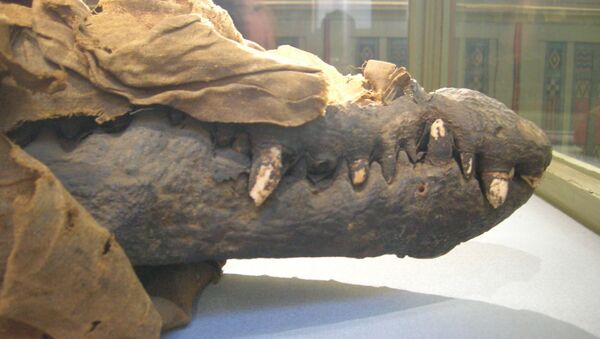Scientists at the Paul Valéry University of Montpellier, also known as or UPVM or Montpellier III, have studied a 2,000-year-old mummy of a crocodile and found that the animal was intentionally killed by a blow to the head for subsequent embalming.
“The most probable cause of death is a serious skull fracture on the top of [the] skull that caused a direct trauma to the brain. The size of the fracture, as well as its direction and shape, suggest that it was made by a single blow presumably with a … thick wooden club, aimed at the posterior right side of the crocodile, probably when it was resting on the ground", researcher Stephanie M. Porcier of France’s Université Paul-Valéry Montpellier III and her colleagues wrote in a new study.
It appears that ancient Egyptians hunted crocodiles specifically to mummify them.
In 2016, a 3D CT scan revealed that 47 smaller crocodiles were packed inside a giant 2,500-year-old crocodile mummy. Prior to this, traditional X-ray and CT scans showed that the artefact is made up of two juvenile crocodile skeletons.
The nearly ten-foot-long (3-metre-long) crocodile mummy has been on exhibit at the Netherlands’ National Museum of Antiquities in Leiden since 1828.
Was fascinated by the crocodile mummy pic.twitter.com/MpVkyfo7An
— Dr Clom In The Netherlands (@SezClom) September 21, 2019
In Ancient Egypt, crocodiles were commonly associated with Sebek, also spelled Sobek, a fertility god who was portrayed as a creature with a reptile head and a human body.



